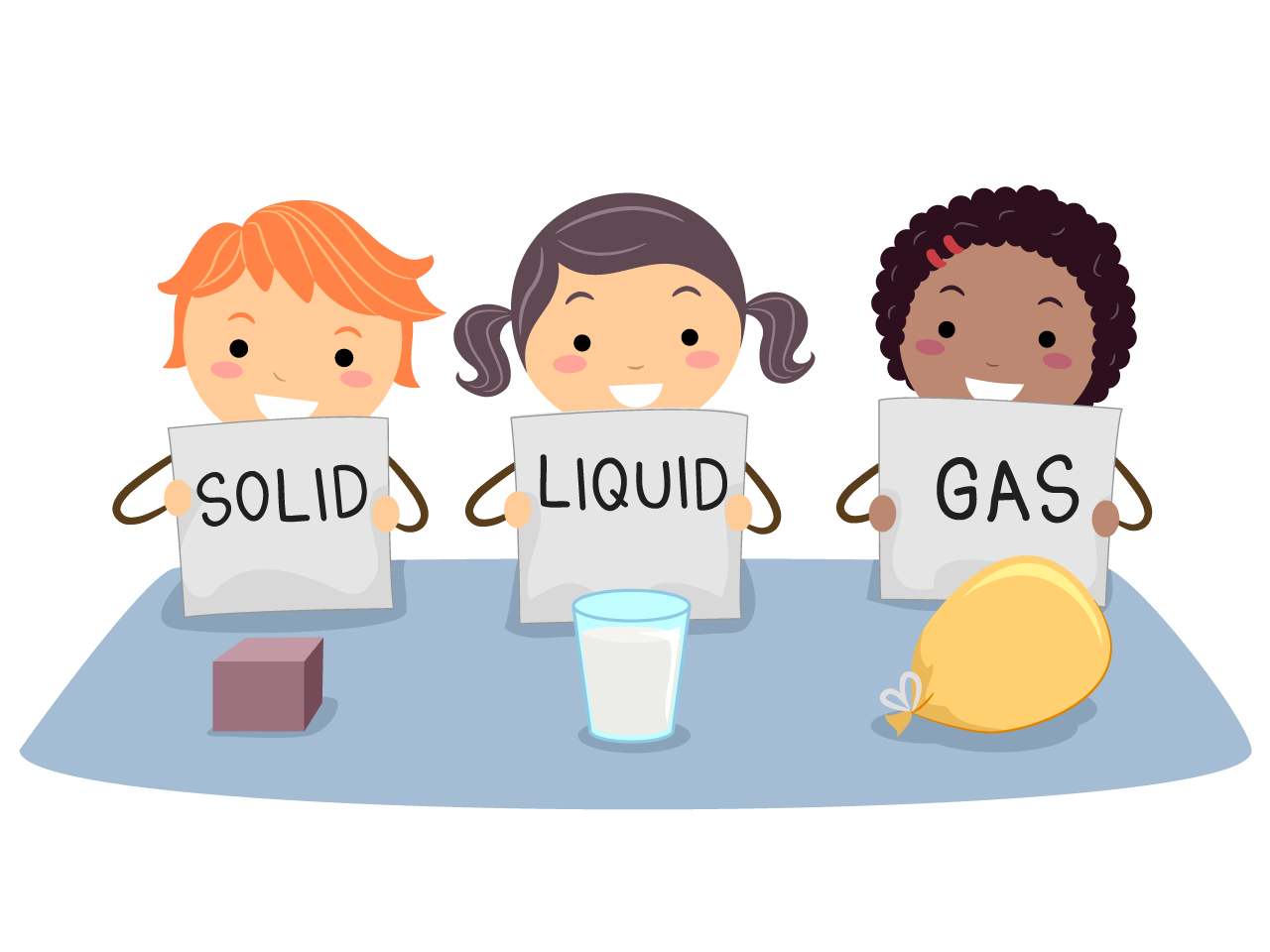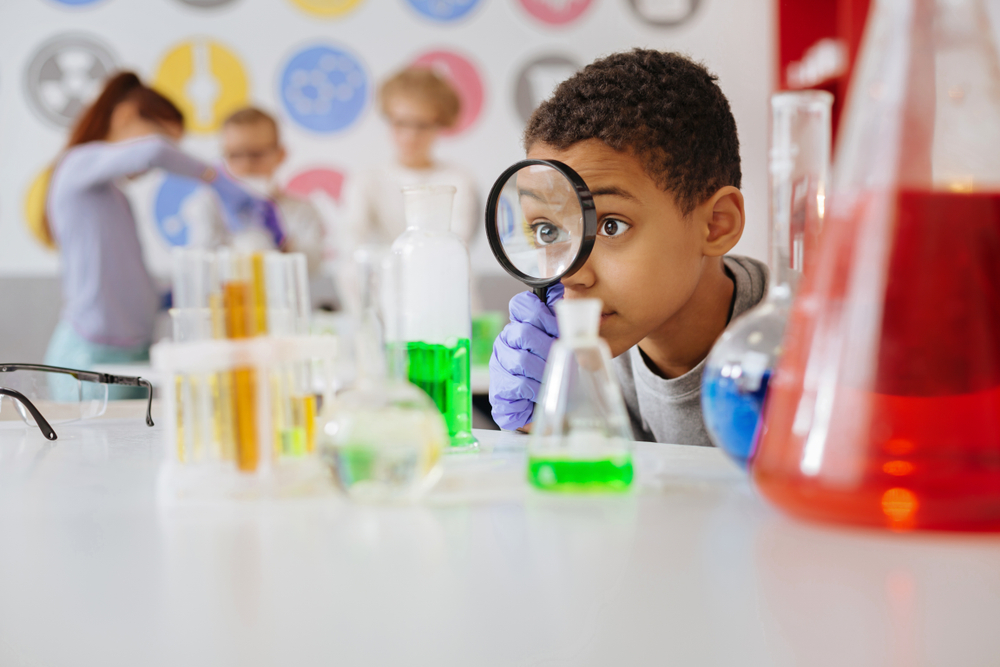Understanding light sources Normal Grade 1 Physical Science Worksheets
3 filtered results
-
From - To
Explore the fascinating world of light sources with our engaging Normal Grade 1 Physical Science Worksheets! Designed for young learners, these worksheets enhance understanding of various light sources such as the sun, light bulbs, and fire. Through interactive activities, students will identify, differentiate, and classify light sources while developing critical thinking skills. Our resources encourage hands-on learning and creativity, making science both fun and approachable for first graders. Perfect for classroom or home study, these worksheets support early scientific inquiry and help build a foundational understanding of how light affects our daily lives. Illuminate concepts with engaging and informative exercises today!
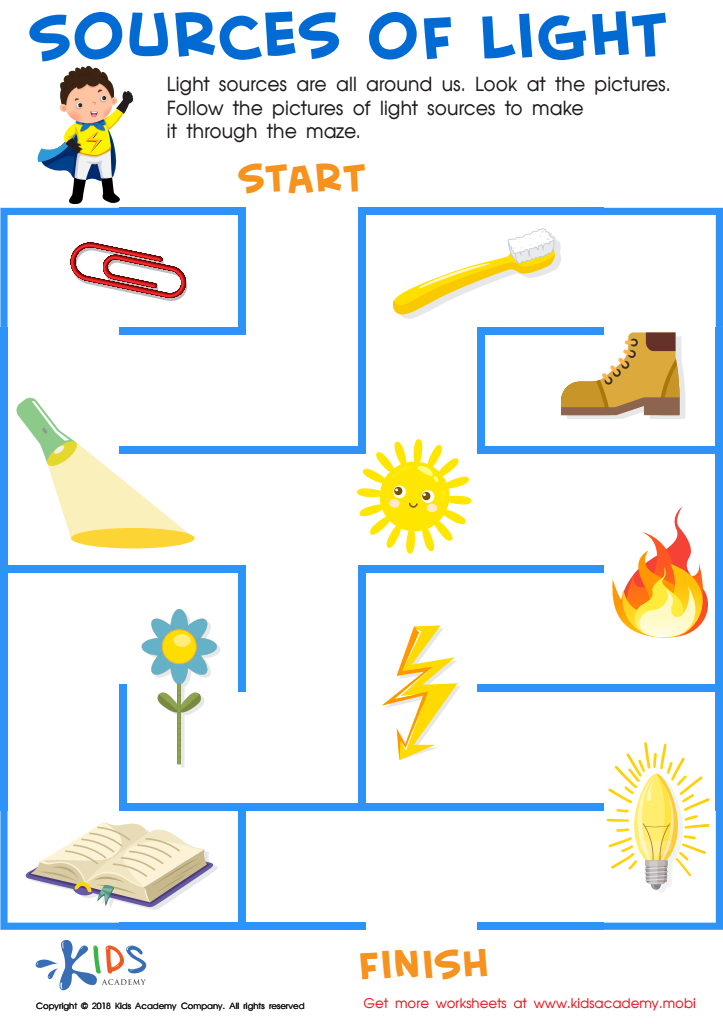

Sources of Light Worksheet
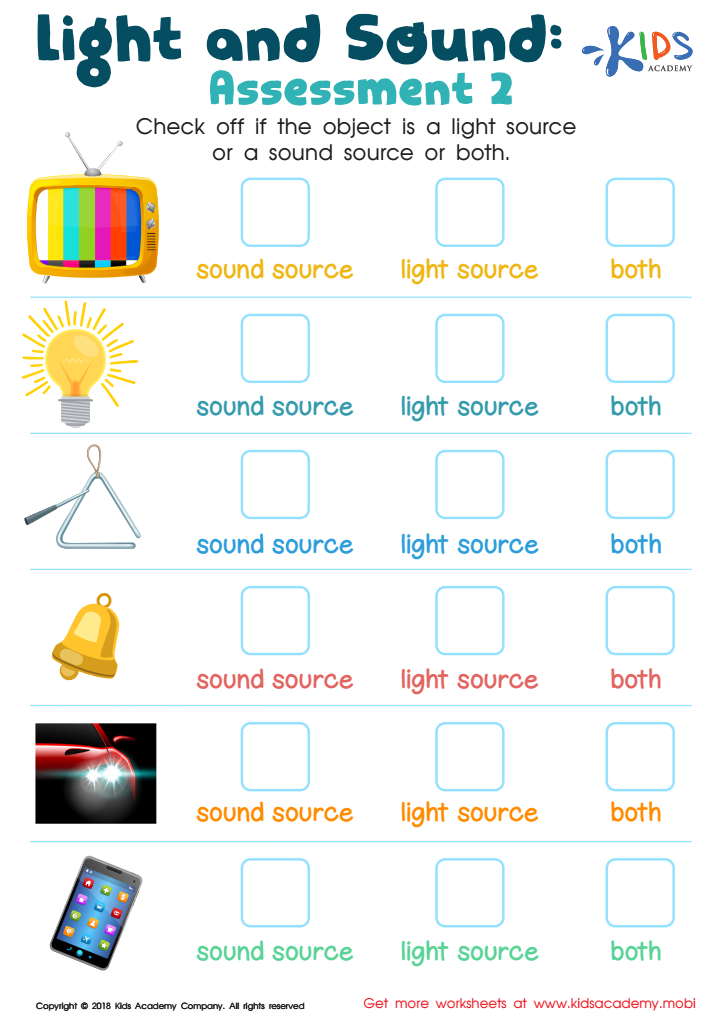

Light and Sound: Assessment 2 Worksheet
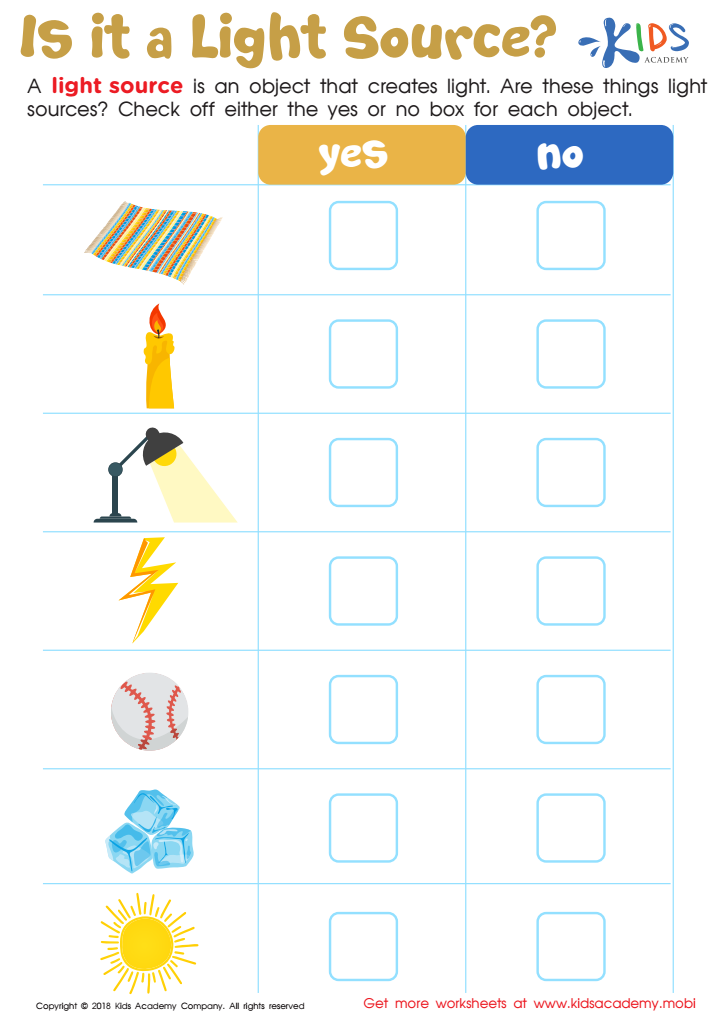

Is It a Light Source? Worksheet
Understanding light sources is crucial for Grade 1 students because it lays the foundation for their scientific inquiry and everyday experiences. Teaching young learners about light sources helps them recognize the difference between natural and artificial lights, fostering curiosity about the world around them. For instance, children can observe how sunlight illuminates their environment and how electrical or battery-operated lights (like flashlights) serve practical functions.
Furthermore, discussions around light sources link to vital concepts in physical science, such as energy and sustainability. Encouraging students to think critically about where light comes from helps them appreciate energy sources, promoting awareness of issues like conservation and the environment. Teachers and parents who emphasize understanding light sources also contribute to improving children's vocabulary and strengthening their reasoning skills.
In addition, engaging students through experiments with light, such as using prisms or shadows, can enhance hands-on learning. This not only aligns with educational standards but also makes learning enjoyable. Ultimately, when educators and parents prioritize the understanding of light sources, they equip children with essential skills for observation, analytical thinking, and a lifelong appreciation for science.
 Assign to My Students
Assign to My Students





